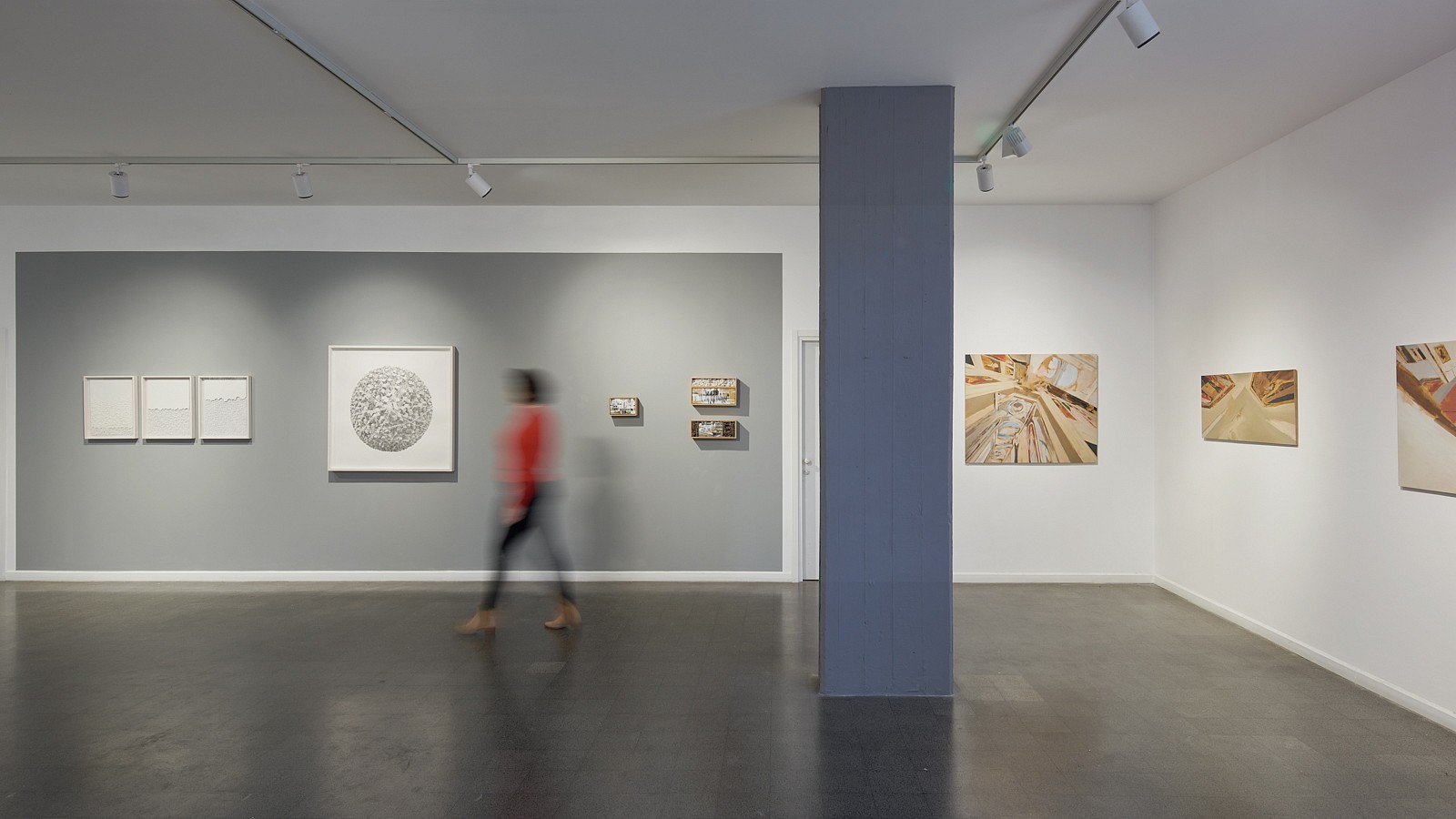PRESS RELEASE

Between Two Points
Dec 15, 2022 – Feb 9, 2023
Between Two Points
Artists: Kristina Chan, Elad Kopler, Yonatan Ron, Daniella Sheinman, Amir Tomashov
Curator: Hadas Glazer
To view catalog please click below
>< >
The geometric axiom that determines that only a single straight line passes between two points was formulated by the ancient Greek mathematician Euclid. As a young child, I hoped to dispute this rigid notion, by imagining two points and stretching lines between them. I discovered that there are plenty of broken or crooked lines, I charted maps with winding paths and passages between points, but a straight line was not to be found.
Apart from being a geometric principle, the axiom contains a graphic description that has a notional dimension concerning origin and destination and the road between them. The pen charting a line on paper creates the outline of a path, yet also creates a partition and borderline.
The works in the exhibition are set in the midst between the graphic representation of space and layered and tactile images that evoke a sense of place and time. The contrasts between line – space, map – territory, abstract and figurative representation evoke a dialectic language. This language seeks to look beyond the surface of the image to the feelings and sensations beneath the immediate appearance of the mapped image and give it depth and meaning. The space, which both the artists and the viewers contemplate and into which they pour their emotions and recollections, creates meaningful imaginary places.
Amir Tomashov creates boxes that contain minutely detailed interpretations of architectural plans, drawings and images. He continues to develop his interest in a dystopian world of collective post-trauma and urbanism. Tomashov treats architectural plans as if they were plans for the destruction that is intricately involved in the concept of construction. As far as he's concerned, the current urban fabric must be conserved and "fossilized" before all memory of it is gone. His meticulous, detailed work includes quotes from blueprints, grids, systematic numeration and even newspaper photos and paper-cuttings. The result is a capsule of both destruction and conservation which glorifies the constantly changing urban aesthetics.
Kristina Chan's work is based on narrative and memory. Topographics is a series of abstracted coastlines exploring the places she has lived and worked. The presentation of the works seeks to resemble an archeological finding or a precious object. They reflect the passage of time and erosion of memory. The works are created using a technique called electro forming. Traditionally a jewelry-making technique, the engravings are carved into the copper with electrical currents (rather than by flattening or wax modeling), a technique that allows her to achieve a very slight object that is both strong and sturdy, like a piece of jewelry or archeological finding. This creates an extremely strong but thin object.
Elad Kopler presents a deeply dense painting whose multiple layers of color create an emphasized tactility. Entry into the abstract painting can happen at any point on the canvas, without a clear understanding whether it is a point of beginning or an ending. The architectonic dimension and the grid at the base layers of the painting serve to balance the bold, overflowing colors.
Yonatan Ron's painting depicts museum exhibition spaces which viewers observe simultaneously from numerous viewpoints. The origins of his images are virtual museum tour images and photos that are distorted by the camera or software – a cubist effect created by a technological glitch. The multiple viewpoints in each painting are analogous to the overwhelming sensation viewers feel while visiting the museums themselves and induce an all-encompassing experience. In his work Ron translates the glitch into a painting created with traditional techniques and focuses on the corporal experience of viewers in space, with the art on display taking a secondary role. The painting bridges the relationship between the physical and the virtual experience, which in turn creates an opposition between the splendor of the museum and the sense of volatility and fragility of the space.
Daniella Sheinman's monochrome works are created with black graphite on white, raw canvas. Her visual language seems completely abstract, yet at the same time it is a representation of internal processes that happen in the human body. The images are "photographs" of the human brain that is made up of trillions of cells that form neuronic lines and networks. Within the rhizomic spreading image she seeks to speak about the human spirit as an "open code" that contains all the spectrum of human emotions. The dialog of black and white, full and empty, reflects the battle ground between humans and the environment. The complicated wiring connects places and events burnished in the memory into emotions and describes the conflict/harmony through which people form their relations with themselves, with others and with the world.
Installation Photography: Youval Hai.
Photography: Youval Hai (Kristina Chan; Elad Kopler; Amir Tomashov; Yonatan Ron); Ran Erde (Daniella Sheinman).

